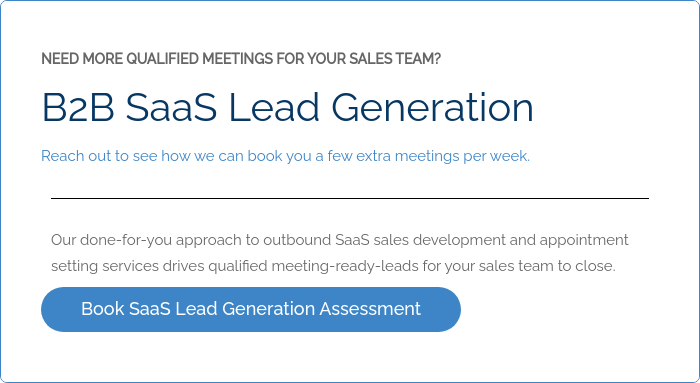Chapter I
Introduction
Deploying a winning sales process effectively arms sales professionals with appropriate tools and messaging needed to deliver scale your sales team effectively.
Drafting a high-impact SaaS sales process playbook is like confronting a problem head-on. The playbook has become a change in basic assumptions from old methods to new ones.
Sales professionals must view a sale from all sides, the SaaS buyers, and the sellers. Also, the management of every aspect of the sale cycle becomes a disciplined process that creates lifetime value for everyone involved to better help SaaS buyers and clients through the decision process.
Your SaaS sales process solidifies the connection with your market. No fixed rules exist. When drafting your playbook, you’ll establish your own SaaS company philosophy. Your sales team acts as your brand’s ambassadors. Providing sales pros with a concise pain points playbook gives them a head start because they aren’t starting out with a blank canvas. Instead, they will have a well-researched playbook at their disposal to create greater efficiency.
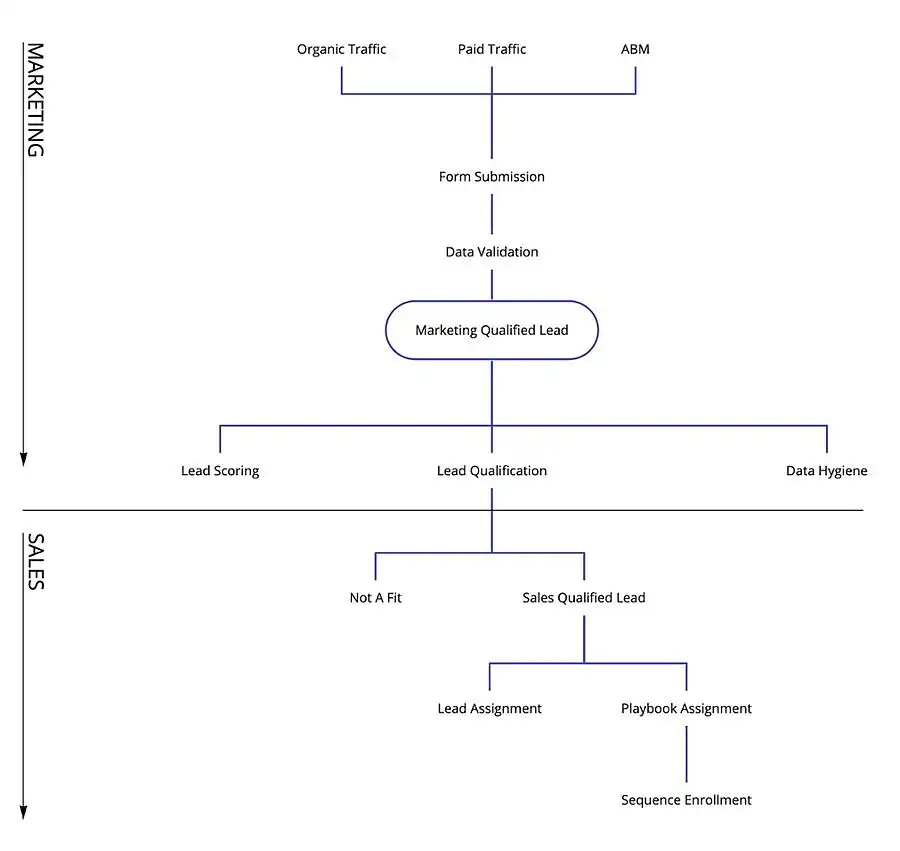
Selling is a bit of a yin and yang – give and take – open-loop process. Sales control the SaaS sales process but the customer also has control of a portion of everything that goes on.
More than 40% of SaaS salespeople say prospecting is the most challenging part of the SaaS sales process, followed by closing (36%) and qualifying (22%). (Spotio)
Also, every selling interaction is a dynamic, SaaS salespeople fluid process which means your products and services sales team has to stay on their toes by being ready to transition quickly to meet each particular situation and customer’s needs.
Short Summary
- A well-crafted SaaS sales playbook equips sales professionals for scaling effectively.
- Personalization, scripts, tactics, and essential tools are key components.
- Modern selling emphasizes empowered decision-making with multiple decision-makers.
- Proactive support of the buyer’s decision process is crucial.
- Avoiding assumptions and addressing customer concerns builds trust and leads to informed decisions.
Chapter II
What to Include in a PlayBook?
You want to give your team-specific tools that they can use to hone their performance and skills products and services. When drafting the playbook, you’ll want to factor in the customer’s unique perspective too.
With sales experience, you’ll know the precise steps required to best advance a sale. It will help the SaaS sales professional and buyer communicates clearly to achieve the best results. Ultimately, you want to ensure that you make a successful sales strategy for a product with business to business, and prospects by having consumer sales at the disposal of your team.
Brand Philosophy
The first section of any playbook should contain your brand’s philosophy.
List an overview of the following:
- History
- Goals
- Products or Services
- Achievements
- Values
Make a list of questions and answers that clients/customer feedback frequently ask about the organization.
Brand Voice
Outline your brand’s language and tone. You’ll use the business information in all content used in association with your business whether written or verbal. Think about the character and persona you want to create for your brand, products and services. Is your business more SaaS sale people technical and factual or maybe it is free-spirited, lightheaded, and conversational?
Customer Personas
Create a character representation of your clients/customers by focusing on the following:
- Ages
- Relationship status (single or married)
- Children (ages)
- Where do they live?
- Yearly income
- Other brands they frequently use (like and dislike)
With the above customer information, your sales team will be better equipped to identify leads and pursue them.
Scripts
The scripts are simply a suggestion. You are not going to require that your SaaS sales professionals follow them word-for-word. Instead, they function as one business sales for success. The ability to tell stories actually starts to earn good customer feedback and trust and paves a great way toward winning business to business or SaaS buyers or SaaS sale person.
A pre-written script displays the brand’s voice in action. It should also outline the company’s philosophy. Always write scripts by considering the customer’s persona.
Tactics
Take your current sales solutions and then add statistics. Consider things such as the best times to call or email. How long will the sales professional wait before they follow up on an engagement? Think about the various successful sales tactics and then start adding them to the playbook.
Tools
A sales rep has to have access to tools that help them keep track of their leads. Good dogs fo smaller teams are ideal. Dedicated software for sharing documents online, a virtual phone, and more are just a few of the must-have tools.
The SaaS Sales Process
Think about what is selling. In Covid 19, selling is the SaaS sales process of parties reaching a beneficial agreement.
The components of selling include:
- Selling involves a series of actions that form a SaaS sales process. It is not just a single act.
- The sales process of selling provides mutual agreements to each party involved. It is about creating a win/win dynamic when reaching the deal.
- Professional sales do conform to a certain degree to a SaaS sales standard. Yes, there is room for creativity and individuality, but the entire SaaS sales process is actually very disciplined and follows the playbook.
Chapter III
An Empowered Decision Process
Modern technology has added layers to selling for SaaS buyers that simply did not exist years ago. Old-school traditional selling processes simply lack the sophistication to keep up due to limitations. New schools of selling techniques have become necessary to succeed. One of the modern buying sales processes has truly flipped things by aligning the points of the sale with the buyer’s considerations in time.
Selling is no longer simply about making a sale. Now it focuses on letting people make SaaS sales decisions that are mutually beneficial. An empowered decision process lets a seller and buyer work together to SaaS sales process to create a deal that satisfies everyone involved.
In 2024, there are an average of 7 decision-makers involved in the SaaS buying process.
Traditional sales methods once viewed people in niches. You were either a prospect or a SaaS sales customer success. There was no delineation made between the two. The legacy business-to-business sales process was never favored in quality or fit for the prospect/customer. There was a serious lack of transparency which made sales forecasting inaccurate and inconsistent. Everything was in a state of disorder.
Modern sales departments have now strived to remedy the situation by creating a gate system in the pipeline process. With the gates, prospects are placed in categories based on where they are in the selling/buying process. Gate systems are an improvement on business-to-business sales funnel old-school sales methods, but they are still not completely effective and often fall short of meeting the business needs of sales professionals, managers, and executives who are looking to scale. In such situations, they require a great deal of knowledge of SaaS sales and insight to make timely, business information and effective decisions.
The traditional focus was once on closing sales or what was referred to as ‘enabling people to buy.’ The systems caused adversarial relationship building to form. An empowered decision approach is far removed from the traditional sales processes. The approach lets the SaaS sales cycle process professional take a leadership role where they foster mutual benefit. The seller and prospect can move forward a step at a time and effort with complete clarity and confidence because they know that at the end of the day, they will make the right decision and take the proper action.
Managing decisions is the paradigm shift we referred to in our introduction. A sales professional now views the sale from all angles: the buyer’s and the seller’s perspectives and sales reps. When managing the SaaS sales cycle, everything is disciplined. The focus is homed in on leading prospects business to business and process and buyers through the decision makers process data points so that the final outcome products and services provide genuine value for the buyer and the seller.
- Know the steps that need to be taken before a sale.
- Communicate clearly with the buyer.
- Work so that both you and the buyer improve the end results
- Use clients and prospects to help make a sales strategy.
Coping with Decision Reluctance
If a buyer has to change to take advantage of what you are selling or offering through business to business or SaaS salesperson, then their decision often takes on multiple facets. Any time the next steps value of an offer is more than the cost, or it fits a buyer’s needs then the decision is usually acceptable and the close deals or closing deals move forward.
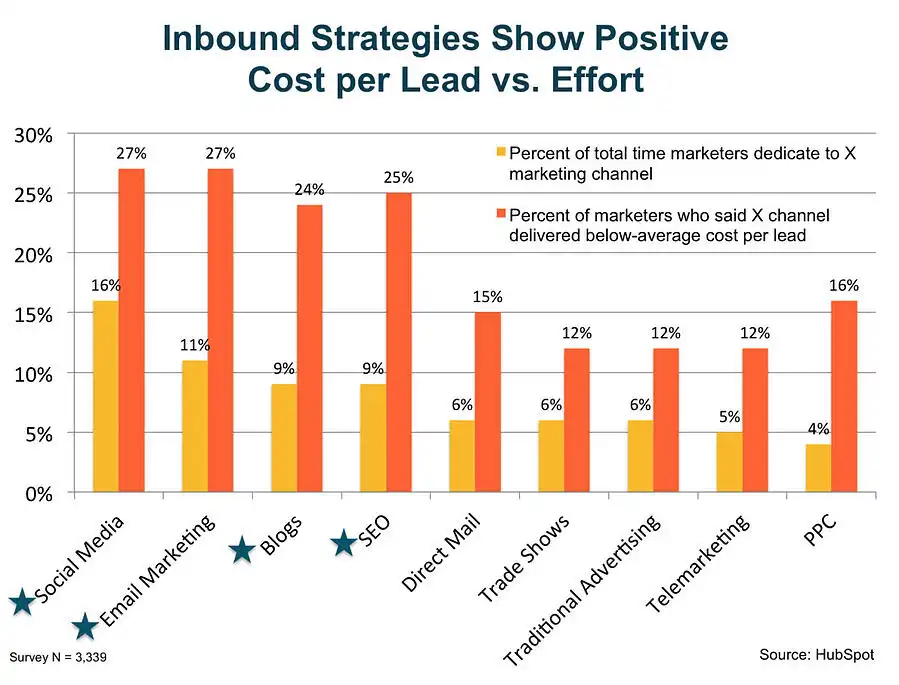
A buyer’s assessment will change if the costs and risks increase due to unexpected consequences. If you do not proactively influence and support the decision sales process of the buyer, then the outcome is unpredictable and risky at best.
In sales, four reasons exist why a seller won’t buy from you:
- Does not need what is being sold.
- Lack of trust.
- The perceived belief is that the cost (pain points) of necessary changes is greater than the cost of simply not going forward.
- Inability to make decisions due to inadequate information or not fully grasping the information.
The key to success is to shift the focus away from trying to manage to say and instead focus on managing the buyer’s decision process. Such a simple change can ensure that you do not lose a sales and also can recognize when your efforts are paying off. You’ll be in a better place business-to-business to free resources and apply them to winnable opportunities or towards generating new ones. Typically, any buyer’s first premature decision sales involve pinpointing that they have a concern or problem, so you’ll know early in the process there is an obstacle.
Determining Mistakes
A frequent sales mistake that a SaaS salesperson and SaaS sales managers make is to assume that if a customer says they have a problem, then they understand what the problem is and how to solve it. Instead of addressing the area of concern, they simply focus on telling the customer how wonderful the SaaS company is and how it will help solve the problem.
Usually, the salesperson functions in a professional way and provides quality information. The customer might even follow up with concerns or questions. Such a reaction is viewed as an indication that the customer success will soon make the decision to buy. However, at this stage, the buyer often enters a state of decision reluctance.
They start to ask themselves the following questions:
- How much will the problem cost?
- How dire is the problem compared to other issues?
- What is the payoff when implementing the solution?
- Are there risks associated?
- What are the possible outcomes?
Decision reluctance is an obstacle that occurs during the SaaS sales strategy when the salesperson fails to provide adequate information related to the decision that the customer is facing. In many cases, the customer might not even know they lack the information needed to next steps plan.
The salesperson has dropped the ball by not identifying the sales potential customers’ problems another business and questions the customer has. They have failed to provide the needed information to push the sale along to the next stage, which is a common mistake that has a negative revenue consequences.
Chapter IV
Examining the SaaS Sales Process
The sales process is a repeatable set of steps that a sales organization has its sales professionals follow to acquire clients. It can also be utilized to deepen and expand product solutions to better meet the needs of clients or clients.
- Create Alignment: Develop a strong sales process that effectively aligns with the buyer’s needs, journey, and situation. A good business-to-business is never a ‘one-size-fits-all.’ Instead, tailor each one for every customer.
- Waypoints & Exit: A high-impact sales process acts as an effective map that helps identify milestones along the process that function as guideposts to a successful outcome. Everything becomes clearer.
- Flexibility: All individual sales funnels have to have flexibility. Manage each one to achieve the necessary milestones. There will always be natural differences that vary between clients’ situations, and sales professionals. Always providing optimum flexibility helps meet the challenges head-on.
- Willingness to Repeat: Developing a robust sales process lets your sales team manage opportunities using a repeatable operation.
- Supports Interactions: The purchase journey is never smooth sailing. Different perspectives and points will alter the map. Many times, usable information is revealed when managing a sale so having a strong sales process in place can leverage the incoming intel to create greater strengths.
- Ability to Make a Strong Decision: A strong SaaS sales process goes beyond simple management. The long-term goal is always to ensure that the buyer and seller both make strong decision-makers.
- Progressive: Progress is particularly important during any sale’s progress. It needs to move in a defined process toward a positive conclusion for both sides.
- Win/Win: During a sale, everyone – both the buyer and the seller – should walk away feeling like they won. The sales experience should feel positive and uplifting.
Chapter V
Sales Process vs. Sales Methodology
The two terms, sales process, and sales methodology share similarities but they each describe varying elements.
- Sales Process: A concisely articulated description of the repeatable steps that a sales professional follows to achieve a sale.
- Sales Methodology: A method or approach used to progress during the sales process. It can change and remains fluid.
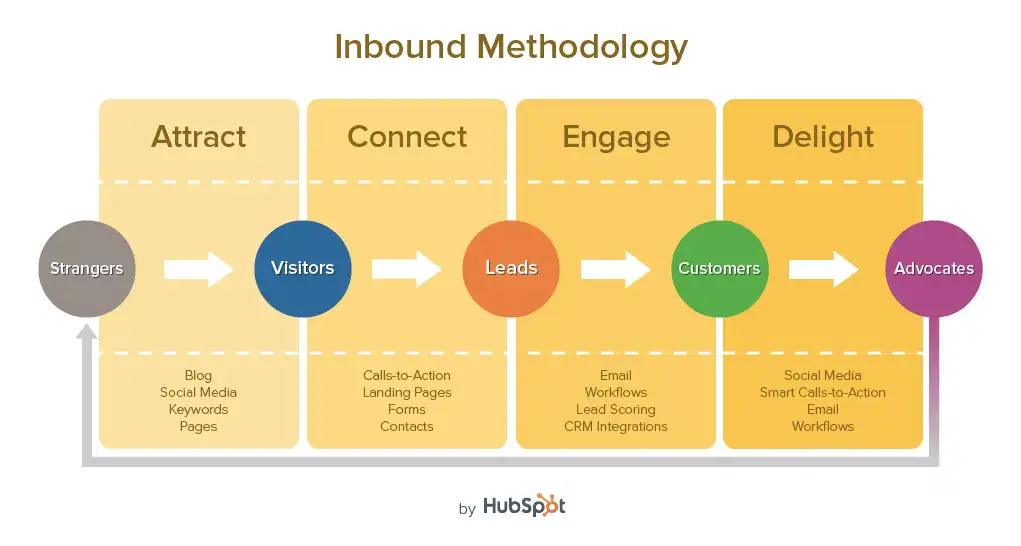
Combining a strong sales process with a sales methodology creates a very impressive game plan that helps ensure greater predictability and lets a sales professional better control the end results.
Defining & Documenting
A sales process consists of a strong plan with a clear purpose.
Three objectives exist in any meaningful business to consumer process:
- Focus on making another business efficient without impacting the goal.
- Create consistency through various activities to manage all of the complexities.
- Develop a base to improve and optimize the business to business or SaaS sale process so adjustments can also be conducted if needed.
Always document the sales process. Without establishing a guide and creating documentation, the sales team will not do the same thing twice for each sale. You’ll have no standard to SaaS sales process access or optimize your actions. Instead, you’ll greater complexity and disruptions which will slow the sales funnel and result in higher costs of social media.

Chapter VI
The Impact of Innovation
Any time you discuss effective sales strategies, you probably notice that there is always a strong focus on SaaS vs B2C, prices (high and low), products or services, however, the most pivotal difference remains between continuous or discontinuous value proposition.
The difference focuses on the level of change the buyer must undergo to obtain the best outcome until purchase. With continuous innovation, there is no need for change. After purchase, the buyer obtains the benefits and objectives of a positive purchase.
Benefits of Continuous Innovation
- Requires no new learning or changes in behavior.
- The buying process focuses on the product.
- Everything remains an insignificant risk.
Problems with Discontinuous Innovation
- Needs new learning or behaviors carried out by the buyer.
- Factors outside drive the sale.
- Substantial risk.
You might wonder, “Can my clients benefit from the sales if they do not change their behavior?”
If your answer is a firm “yes” then your sales process already features continuous innovation. However, if you answer ‘no’ then the consumer sales approach probably aligns with discontinuous innovation on social media.
The risk of purchasing continuous innovation is relatively minimal risk. However, discontinuous innovation remains a considerable risk for the buyer. Purchasing value-added solutions involve risk.
- Financial investment.
- The time needed to implement solutions.
- Poor image of the company.
- Possibly the solution fails.
The buyer might not make the necessary changes to gain the benefits of the solution. They may simply not understand the features and benefits or have a grasp on their problems.
Chapter VII
Decision Making Phases
If you plan on developing a decision-making process, then you’ll want to document the various decisions your clients/buyers weigh when deciding. List all of the decisions that the buyers make in order.
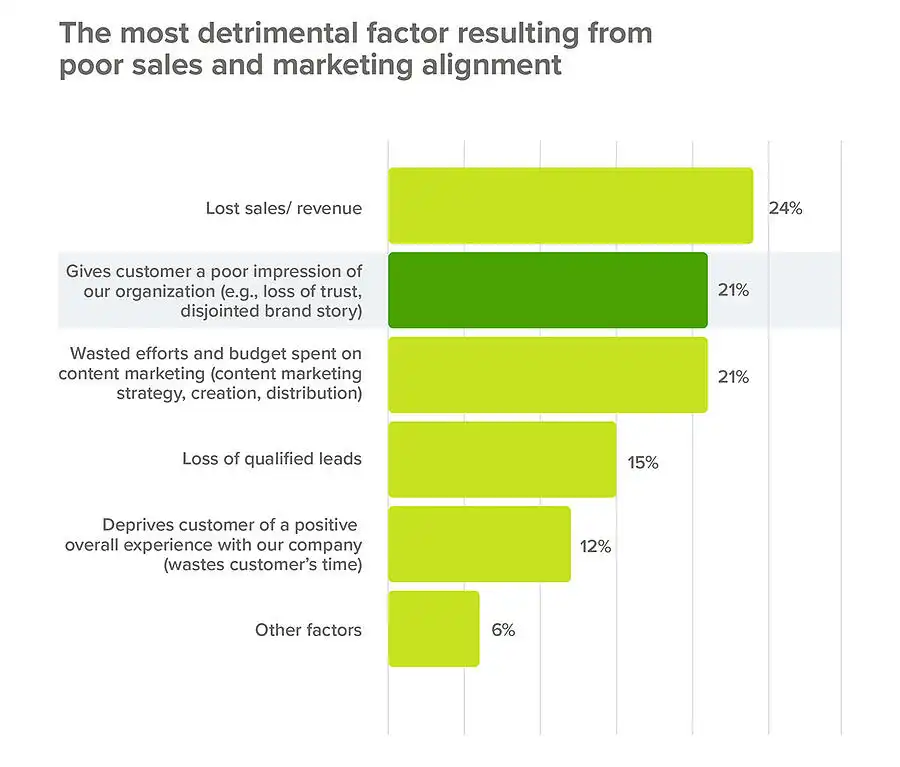
When a decision to buy occurs, it is the fulfillment of numerous decisions. It is impossible to outline all decisions that a buyer will go through, but they can be broken down into four phases that are each very distinct.
There are four distinct phases involved in every decision. The four phases might be completed within seconds or could even take years. No firm time exists industry trends.
Discovery Phase
The Discovery Phase is the first stage that any prospect enters. It is often considered the ‘intent to investigate’ phase. The discovery phase is also often referred to as the epiphany phase within the buyer’s journey.
At this point, the prospect or product or service is thinking about things and weighing them out. They have started to prioritize all issues, obstacles, and opportunities which directs them where their attention should focus.
The Discovery Phase is when the buyer and seller meet. At this point, sales professionals should make sure that all sales have been well-orchestrated and are in alignment with the company’s approach.
During the Discovery Phase, the prospect is open to influence.
The Diagnosis Phase
The Diagnosis Phase builds awareness and creates demand. The decision criteria also start to occur. The prospect starts to move beyond feeling there is a potential problem and, instead, starts to actually define the problem, figure out its cause, and rank it as a priority.
During this phase of the decision process, it’s easy to become confused about the various solutions and what the solutions represent. However, the sales professionals will have robust diagnostic skills and a toolset in place which they can use to quickly set themselves apart from the competition and give themselves the competitive plan to better impact the Diagnosis Phase.
The sale actually occurs in diagnosis.
Figuring out the indicators of what someone or an organization will buy or do is all about being able to define the problem, its cause, and its cost. If a sale starts to stall and the buyer shows unpredictable behavior, then it is typically because of this phase. You don’t want to ever rush past the diagnosis phase. Instead, make sure all questions are answered and loose ends are tied up.
The Design Phase
You want to figure out how to solve the problem. If the problem has not been clearly defined during the diagnosis phase, then it’s going to be hard to define and figure out a solution in the design phase.
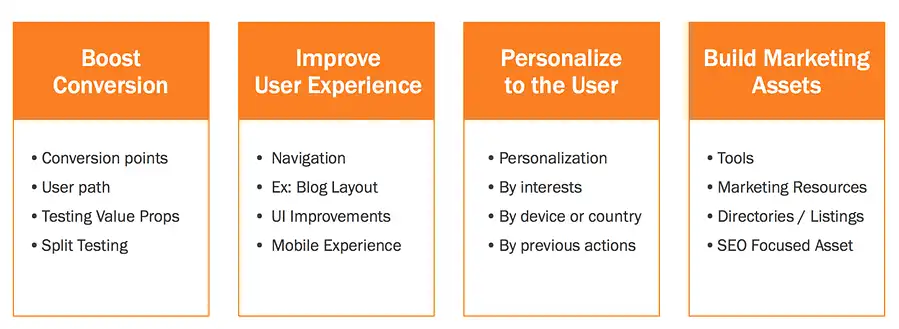
At this point, the buyer seeks to understand the solution alternatives. They will weigh the resources they can use to solve the problem and better understand the assorted options.
Carry the design phase-out by collaborating with the prospect so they can better understand the risks, trade-offs, and alternatives. If a buyer participates in this process, then the solution truly becomes theirs. The seller should maintain a leadership role during discovery call the process of sales techniques.
The design phase is about building strong customer relations and reaching solutions.
The Decision Phase
Usually, this is the phase all sales professionals focus on. At this phase, a great close deals of clarity is formed. A sales professional can focus on the prospect’s desired expectations and find out if any red flags exist.
This is the final stage when the decision is reached.
Chapter VIII
Documenting the Sales Process
Both parties, the seller, and the buyer must remain fully engaged and active during the entire sales process.
With a traditional selling approach, a couple of flows exist:
- The buyer makes the decision.
- The approach focuses on a single big decision ‘yes/no.’
With the modern decision process, both the buyer and seller are responsible for working together to make mutual decisions that actually build upon each other. They form a true partnership.
- You should always focus on achieving a win/win sales rep or there is no sale. Both parties have to walk away as winners.
- A successful sales funnel takes time and challenging work. You’ll need to allocate a sufficient amount of hours/days/weeks to gain higher value opportunities.
A sales organization that takes an initiative-taking approach lets you define and document the SaaS sales process. Documenting the process helps recent sales too.
Modern selling techniques are complex and dynamic. It involves many variables so inadequate documentation can quickly lead to misalignment and even cause negative friction.
Designing the Sales Process
Over-engineering, the sales process has become a common mistake. Instead, ensure that the documentation depicts how things are truly done in the real world. The roadmap designed should offer clarity without being overly rigid.
Start designing the sales process by identifying waypoints that show inflection points along the entire sales process. Once you define your waypoints, they will become your pipeline stages. Group the actions together as you progress through the decision/sales process.
They will break into two categories:
- Activities/decisions, actions that occur in the defined progression
- Activities, decisions, and actions that occur in the decision/sales process
In the activities list, note which actions or decisions were crucial to your success.
Chapter IX
Pipeline Documentation
Build your pipeline roadmap, and create a table format with five columns:
- Stage Name
- Objective/Intent
- Customer Actions
- Salesperson actions
- Exit Criteria for Stage
Chapter X
The Necessity of a Playbook
A playbook is an effortless great way to determine the effectiveness of the sales pipeline so you can adjust and create an even more positive impact. With effective sales tactics, things can quickly turn into pandemonium.
A new sales rep will also benefit from having a standardized structure. You can easily assign roles and objectives to every member of the team.
Your team will also need to know your best practices and how you dealt with disputes or competition in the past. With a playbook, you’ll record the information needed to effectively close deals at various stages through the sales cycle. The playbook can then be used by your sales reps.
Chapter XI
Benefits of Playbook
In today’s data-driven environment, the sales cycle goals of an effective sales team have not changed very much. However, the resources have evolved and undergone serious tech updates in sales and marketing automation. AI-powered software is even assisting sales teams in cold calls creating innovative new accounts and updating/amending existing ones.
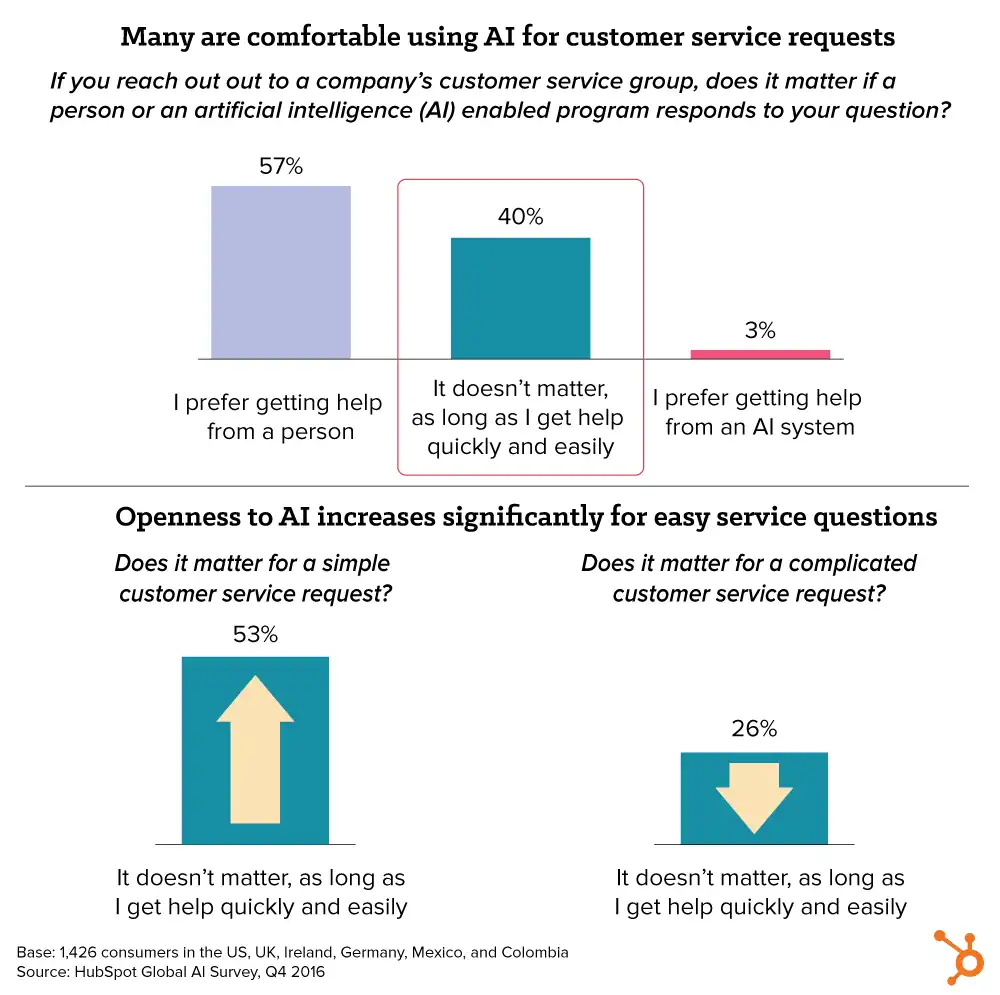
Below is a list of the many advantages associated with having a high-impact sales process playbook for your team of sales professionals.
Instructional Guide
A playbook acts as an easy-to-follow step-by-step guide for both new hires and existing sales professionals. Providing your team with a customer’s profile and expectations is a valuable resource, especially when training.
Sales managers go over the playbooks quickly and it becomes a handy single resource that creates clarity and removes the risk of misinformation.
Personalization Ability

Salespersons like buyers who reach out promptly. People are notoriously impatient, and you might lose a sales to the competition if you do not promptly respond. With a sales experience, your sales team buyer’s journey can quickly create personalized business to business and even make one-of-a-kind sales calls using a uniform platform. They can then respond to various business sales of products and services scenarios using the playbook.
Without it, it can take hours to create a tailored due diligence pricing chart or other content material. However, the playbook lets them quickly develop the necessary data which means they can rapidly meet the needs of their buyers and achieve more sales activities.
New Products
Using the playbook, a sales manager can quickly have access to essential features of products or services such as buyer stereotypes, and existing resources. Even key performance indicators (KPIs) are at the disposal of the sales and marketing team.

Reduced Sales Cycles
A playbook can help shorten the sales cycle. Everything becomes clear and mistakes are avoidable. The playbook makes things easy to follow for the entire team of business sales so that everyone uses the same technology at the same time to create fluidity in the workplace. Reducing sales cycles ensures happier clients/potential customers.
When everyone is on the same landing pages, you’ll avoid costly mistakes. The playbook defines things and lets your team filter out the bad leads quicker and easier. They can then spend more time pursuing leads and making conversions.
Guided selling lets your SaaS salespeople docs on potential customers and their problems to create shorter sales cycles and reduce the various stages.
Saves Time
With sales management, it’s important to have firm guidelines along with outlined standardized methods. A sales-playbook offers instructions and sales tools that your sales will rely on. It also outlines clear expectations for any new employees. You can create uniformity throughout your sales force which saves valuable time.
When you combine established processes with ready-to-use sales-enabled content, you’ll save your rep’s time. Managers can focus on the buyer’s journey and other parts of the sales process and spend fewer hours training or coaching over things that are repetitive and covered in the playbook.
Best Practices
Combining operational best practices with hardcore data or data points will help highlight your sales leaders from the rest. You can then focus on moving the needle even higher. Juggle your sales to reach higher levels by concentrating on activity-level statistics.
Better identify the various skills of your top sales performers. Everyone in business can then examine the situation and come up with real instances that truly help each team member involved achieve excellent practices to obtain the same impressive results.
Chapter XII
Creating a Playbook
Follow the methods below to start building your playbook:
Examine Selling Points
You’ll need to identify your selling points and what works best for your organization. Figure out exactly what sets you apart from your competition. You want to make your clients aware of what is unique about your service. Think about what your selling proposition is so you can better focus on your goals.

Target Customers
You’ll want to determine your target or potential business to business or SaaS customers and create customer files that reveal personalities and other determining factors. If you need to sell something to customer service, you’ll need to understand what your buyer is seeking and their particular pain points.
Script Framework
When you draft scripts with specific processes your team members can easily follow them. They can also provide them to potential customers. The best sales playbook is a scalable foundation that holds all of your sales scripts. Include pipeline management practices along with explanations for all conceivable scenarios.
Everyone in your team should always remain united and work together in business sales like a well-oiled machine toward a common goal.
Standardized Resources
Any time your sales contacts a potential customer’s business sales they should be prepared for any possible scenario, questions, or problems. Clients and buyers often request proof, so sales professional has to stay on their toes to provide them with the information needed to seal the deal. Case studies, references, and more are all innovative ideas of the times to have on hand. You want to highlight the quality of your product or service and also build credibility.
Buyers and clients also enjoy testimonials. It puts their mind at ease when they see that others have purchased from you before and been happy with the translation SaaS sales.
Incentives & Bonuses
Your team is going to be eager to sell if they know what to expect in business sales and the perks provided. Let them know their attainable rewards. Transparency is always appreciated. Try to always ensure that your sales professionals strive to improve and get better with each new deal. They will make additional money and your organization will reap the benefits of increased sales.
Combine Marketing With Sales Targets
Joining marketing and SaaS agencies with sales targets helps you increase your sales funnel. Use the content and blog posts on your site to increase brand trust and reach potential business-to-business or SaaS customers and clients. You want to focus on whatever sales techniques or SaaS sales tips or SaaS sales techniques give you top-notch results.
Process Tracks
The ultimate goal of any playbook is to take your business sales to the next steps and beyond. Your sales team should keep track of information such as phone calls, emails, and texts sent every day. They should also track everything that is going on with the team members. The more information that you gather the better picture you will build of what has proven successful and what has fallen short.
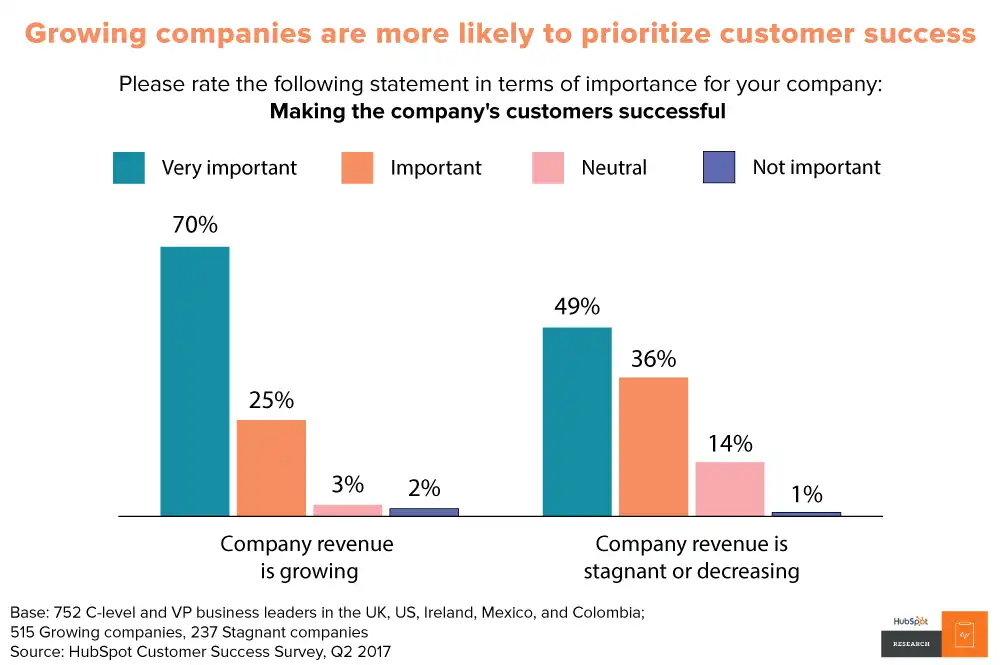
Consistency to Improve
Track the success of sales messaging so you can enhance the lead-to-conversion rates and create better sales-ready messages.
Focus on noticeably clear core marketing strategies and approaches that gain you the results you seek. You can slowly make messaging adjustments and cold calling as needed so you stay on track and modern.
If you find that something is negatively impacting your sales funnel, then it’s time to get rid of it. You want to make purposeful judgments and then carry them through using a predetermined schedule.
Make note of everything so you can see what impacts the sales your team makes. If a slight change in a sales letter increases response, then you’ll want to make note of tweaks in your playbook. When creating a sales-playbook, you need to always have an open-door policy with your sales team and welcome input. Current ideas help your organization succeed.
Also, avoid giving up too early. If you implement a plan and it does not render results right away, then don’t just give up. Instead, stick with it for a while and see if the following weak things make a turn for the better.
Chapter XIII
Summary of Crucial Takeaways
In summary, we will take a closer look at a few crucial pointers:
- An effective sales-playbook is a document that contains all of the sales techniques and methods of your sales team’s best practices. It is used for each member of your sales team in SaaS sales techniques.
- The playbook acts as a live document which means it can be updated and modified as needed to keep it current and relevant.
- A playbook lets you track the steps of your sales team.
- You’ll have a revealing and detailed process that works well for new hires.
- Testimonials, references, case studies, trial versions, and free samples are all great to include in the playbook.
- Always include helpful lead qualifying criteria.
- Utilize blogging and content to build brand awareness and trust.
- Track all metrics such as monthly sales growth, cost per acquisition, and average purchase value.
- Always make sure your sales-playbook has been conditioned for growth and is an effective high-impact sales process for your team.
Clearly, all organizations should take the time to draft a valuable sales-playbook for 2024 and beyond. Businesses have become highly competitive so having a leading team of sales professionals with access to the latest tools is covid 19 essential for future success.
Frequently Asked Questions
What is a high-impact SaaS sales process, and how does it differ from a traditional sales process?
A high-impact SaaS sales process is tailored to the unique characteristics of selling software as a service. It focuses on subscription-based models, recurring revenue, and customer success, whereas traditional sales often centers around one-time transactions.
What are the key stages of a high-impact SaaS sales process?
The stages typically include prospecting, qualification, product demonstration, trial or evaluation, negotiation, and customer onboarding.
How can a high-impact SaaS sales process improve customer retention and reduce churn?
By prioritizing customer success and ensuring customers receive value from day one, a high-impact sales process helps retain customers and reduces the likelihood of churn.
What strategies can enhance lead generation within a high-impact SaaS sales process?
Effective content marketing, inbound lead generation, and leveraging referral programs can significantly boost lead generation in the SaaS context.
How important is customer education and support in a high-impact SaaS sales process?
Customer education and support are paramount. Providing resources, training, and responsive support are key to ensuring customers maximize the value of your SaaS product.
What metrics should a SaaS company track to evaluate the effectiveness of their high-impact sales process?
Metrics like Customer Acquisition Cost (CAC), Customer Lifetime Value (CLTV), Churn Rate, and Net Promoter Score (NPS) are important for evaluating the efficiency and impact of a SaaS sales process.

